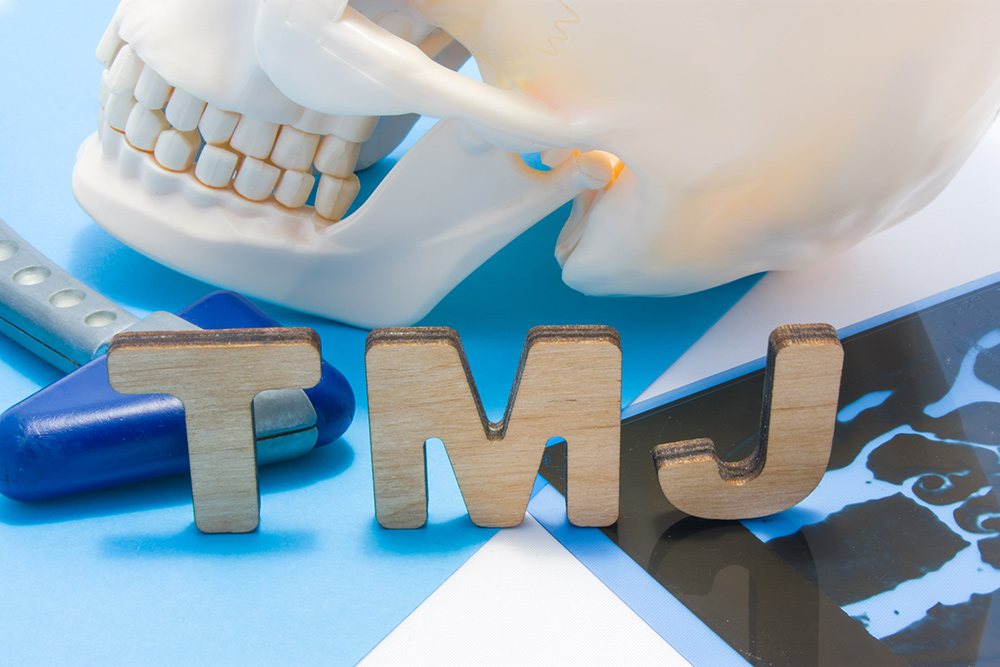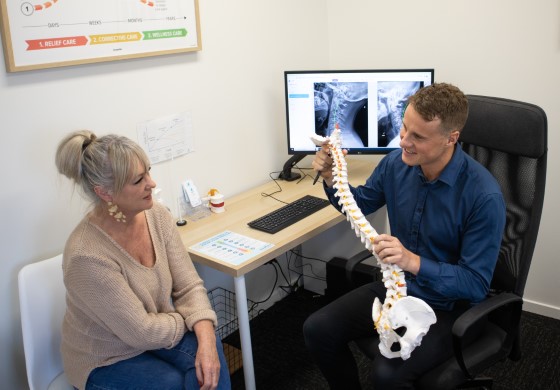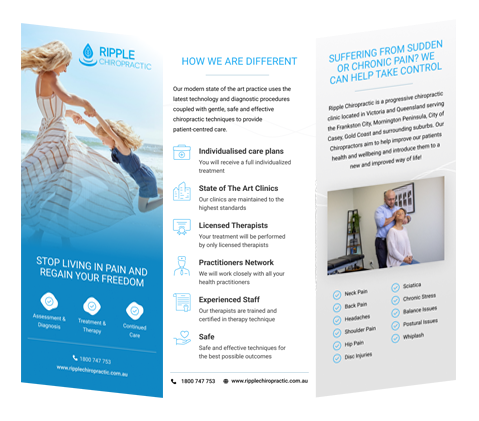Chiropractor for TMJ Treatment
at Ripple Chiropractic
- Comprehensive History
- Health Goal Setting
- Orthopedic Exam
- Neurological Exam
- Biostructural Exam
- 3D Posture Analysis
- Range Of Motion Exam
- Referral For Diagnostic Imaging
- First Follow Up Treatment
EXCELLENTBased on 109 reviews Trustindex verifies that the original source of the review is Google.
Trustindex verifies that the original source of the review is Google. Helena Annelise2022-05-26All the chiropractors have been so helpful and their reception is friendly and personable! As someone who works 8 hours a day at a desk I am grateful to have them. Truly recommend Ripple if you are in search for a chiro to help your road to recovery. Thanks again!Trustindex verifies that the original source of the review is Google.
Helena Annelise2022-05-26All the chiropractors have been so helpful and their reception is friendly and personable! As someone who works 8 hours a day at a desk I am grateful to have them. Truly recommend Ripple if you are in search for a chiro to help your road to recovery. Thanks again!Trustindex verifies that the original source of the review is Google. Trevor Wyhoon2022-04-29Im normally not one to recommend, but this team is Fantastic!!!. They help you set goals for your care and lead you through them. Great results, cannot recommend them highly enough.Trustindex verifies that the original source of the review is Google.
Trevor Wyhoon2022-04-29Im normally not one to recommend, but this team is Fantastic!!!. They help you set goals for your care and lead you through them. Great results, cannot recommend them highly enough.Trustindex verifies that the original source of the review is Google. Laura Feddersen2022-03-25Ripple chiropractic is like no other I have experienced. The care is 10/10, the investigative work done to understand my issues was thorough. They educated me to understand how I got to this point and how we were going to correct it. I couldn't be happier at Ripple.Trustindex verifies that the original source of the review is Google.
Laura Feddersen2022-03-25Ripple chiropractic is like no other I have experienced. The care is 10/10, the investigative work done to understand my issues was thorough. They educated me to understand how I got to this point and how we were going to correct it. I couldn't be happier at Ripple.Trustindex verifies that the original source of the review is Google. Melissa Parkinson2022-02-16Highly recommend!! My family has been seeing Dr Aleks and the team at Ripple Chiropractic for many months now and we cannot be happier with the level of care and treatment we have received. We have all had amazing results and cannot thank Dr Aleks enough.
Melissa Parkinson2022-02-16Highly recommend!! My family has been seeing Dr Aleks and the team at Ripple Chiropractic for many months now and we cannot be happier with the level of care and treatment we have received. We have all had amazing results and cannot thank Dr Aleks enough.
Chiropractic for TMJ may present a potential pathway for addressing TMJ disorders, possibly offering relief from pain and discomfort associated with this condition.
Chiropractors at Ripple Chiropractic can help with identifying and treating misalignments and dysfunctions in the jaw that may contribute to TMJ. A combination of techniques such as jaw adjustments, targeted exercises and lifestyle advice may help patients manage symptoms.
What are the Common Symptoms of TMJ Pain?
TMJ disorders primarily impact the temporomandibular joint, which connects your jaw to the skull, but they can also influence surrounding muscles and tendons.
These disorders can manifest a range of symptoms that may vary in intensity and frequency, including:
- Persistent Jaw Pain or Tenderness: One of the most common indicators of a TMJ disorder is ongoing discomfort or pain in the jaw area, which might be more pronounced when chewing or during other jaw movements.
- Difficulty Chewing or Discomfort While Chewing: Individuals may experience pain or a strange sensation when eating, which can make it hard to chew food properly.
- Aching Pain Around Your Ear: Since the TMJ is located near the ears, disorders affecting this joint often cause discomfort or aching around the areas, which can sometimes be mistaken for earaches.
- Limited Ability to Open or Close the Mouth: TMJ disorders can lead to mobility issues where opening or closing the mouth becomes difficult.
- Clicking, Popping or Grating Sounds in the Jaw Joint: These sounds or sensations when moving the jaw are common in TMJ disorders.
What Causes TMJ Pain?
TMJ pain, often associated with temporomandibular disorders (TMD), arises from a variety of factors that can impact the jaw joints, chewing muscles and even overall posture.
- Jaw Injuries or Misalignment: Trauma to the jaw or a misalignment of the teeth can lead to TMJ pain. These injuries or structural issues can disrupt the normal functioning of the temporomandibular joint.
- Excessive Jaw Clenching or Teeth Grinding (Bruxism): Many individuals may unconsciously clench their jaw or grind their teeth, especially during sleep. This can exert excessive pressure on the TMJ.
- Arthritis in the TMJ: Just like other joints in the body, the TMJ can also be affected by arthritis. Osteoarthritis and rheumatoid arthritis can cause degeneration of the joint, leading to pain and restricted movement.
- Stress: High levels of stress can lead to tightening of the jaw and facial muscles. This constant tension can affect the TMJ.
- Poor Posture: Poor posture, particularly in the neck and upper back can lead to additional strain on the neck muscles and jaw.
- Temporomandibular Joint Dysfunction: This refers to a group of conditions that cause movement dysfunctions and pain in the jaw joints and muscles controlling jaw movement.
Additional contributing factors can include extreme jaw movements, neck aches and facial pain, blood flow changes and overuse or misuse of the chewing muscles.
Stop Living in Pain and Regain Your Freedom

Chiropractic treatment may be able to alleviate TMJ pain.
How is TMJ Pain Diagnosed?
Diagnosing TMJ pain and associated disorders, including TMD, is a detailed process that requires a holistic understanding of the patient’s symptoms, health history and physical condition.
- Discussing Symptoms and Health History: The initial step in diagnosing TMJ pain involves a thorough discussion of the symptoms and any prior health history related to issues that might affect the jaw. This conversation also covers any factors that might exacerbate TMJ symptoms such as stress or habits like teeth grinding.
- Physical Examination of the Jaw and Neck: A comprehensive physical examination focuses on the functionality and alignment of the jaw, Pain points assessed may include the range of motion of the jaw, and any abnormalities in the way the upper and lower teeth align. They will also check for tenderness in the jaw muscles and neck, as these areas can contribute to TMJ dysfunction.
- Jaw Movement Tests: These tests observe the motion of the jaw to identify any irregularities, restrictions or discomfort during movements
- Imaging Tests: X-rays, MRI scans or CT scans may be used to provide a clearer view of the temporomandibular joints and the surrounding structures.
Chiropractic Treatment for TMJ Pain
Chiropractic care is focused on diagnosing and treating mechanical disorders of the musculoskeletal system, especially the spine and jaw, with an emphasis on manual adjustment and manipulation of the joints.
For TMJ disorders, this form of treatment aims to help relieve pain, increase functionality and support overall joint health through the following:
- TMJ Adjustments: Chiropractic adjustments targeting the joints of the lower jaw may assist in correcting misalignments and improving motion efficiency which may help to manage jaw movement and reduce symptoms of TMJ disorders such as painful clicking or chronic jaw pain.
- Manual Therapy: Techniques such as massage and soft tissue manipulation around the jaw and neck may increase blood flow which could potentially help ease pain. These methods could also potentially relax the muscles involved and may reduce the occurrence of jaw clicking and discomfort.
- Therapeutic Exercises: Specific exercises designed to strengthen and improve the flexibility of the jaw and surrounding muscles may further assist in managing TMJ symptoms.
- Lifestyle Modifications: Guidance on changes to daily habits and ergonomic adjustments may significantly impact the management of TMJ disorders.
While chiropractic care is considered safe, there are potential risks such as exacerbation of pain, adverse reactions and misdiagnosis or ineffectiveness that should be considered.
It is important to consult with a qualified chiropractor who can conduct a thorough assessment and customise a treatment plan that considers the specific needs and conditions of the patient.
Read our blog on how a chiropractor can help with jaw pain, if you require a deeper understanding.
Why Choose Us For Your TMJ Treatment
At Ripple Chiropractic, we take pride in providing exceptional chiropractic care for patients with TMJ or TMD pain. Our experienced chiropractors are dedicated to helping you find relief from your symptoms and improve your overall health and wellbeing.
Individualised care plans
You will receive a full individualised treatment
State of The Art Clinics
Our clinics are maintained to the highest standards.
Licensed Therapists
Your treatment will be performed by only licensed therapists
Practitioners Network
We will work closely with all your health practitioners
Experienced Staff
Our therapists are trained and certified in therapy technique
Safe
Safe and effective techniques for the best possible outcomes.
How to Schedule an Appointment For
TMJ Treatment at Ripple Chiropractic
If you’d like to book an initial consultation, call us on 1800 747 753 or fill out our online booking form.
FAQs
If you have any more questions about TMJ treatment please don’t hesitate to contact us today. In the meantime, check out our most frequently asked questions below which may provide additional information you’re looking for.
Can a chiropractor help with TMJ?
Yes, a chiropractor may be able to assist with managing TMJ pain and supporting jaw function. They employ various techniques including chiropractic adjustments that focus on addressing misalignments and enhancing joint motion.
Is TMJ chiropractic treatment painful?
Chiropractic treatments for TMJ are typically gentle and are intended to offer pain relief without causing additional discomfort. During the treatment, care is taken to ensure that all movements and adjustments are performed smoothly with the aim of reducing the existing pain and discomfort rather than causing pain.
How many sessions will I need for my TMJ treatment?
The number of sessions required can vary significantly based on the severity and specifics of the condition, such as the extent of jaw misalignment or the persistence of symptoms such as jaw locking or pain.
What are some other ways to manage TMJ pain at home?
Some ways to do so include relaxation techniques which include meditation or breathing exercises to relieve stress, temporarily switching to a diet of soft foods to alleviate the strain on your jaw, applying heat or cold packs and practising some jaw exercises.
General Information Disclaimer: The content provided here is for informational purposes only and is not intended as medical advice, diagnosis, or treatment. Always seek the advice of your health professional with any questions you may have regarding a medical condition. The information on this site is general in nature and may not reflect current medical developments or research. Your reliance on any information provided by this site is solely at your own risk.
Grab Our New Patient Offer Today
Consultation + 1st Treatment

We are offering a special price for your consultation + 1st treatment which will include all of the following:
- Comprehensive history including chief complaint, trauma and medical history.
- Health goal setting
- Orthopedic exam
- Neurological Exam
- Biostructural Exam
- 3D posture analysis
- Range of motion exam
- Referral for diagnostic imaging if clinically appropriate
- First follow up treatment


